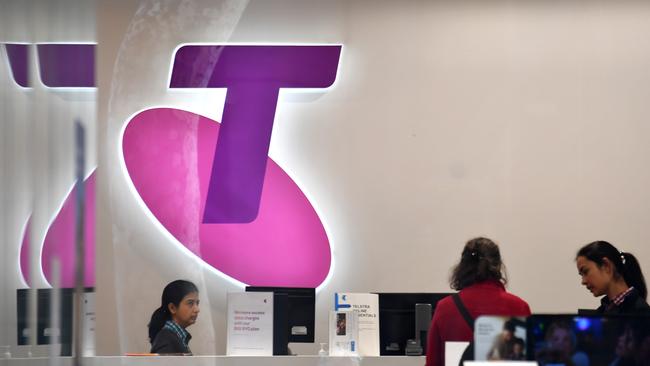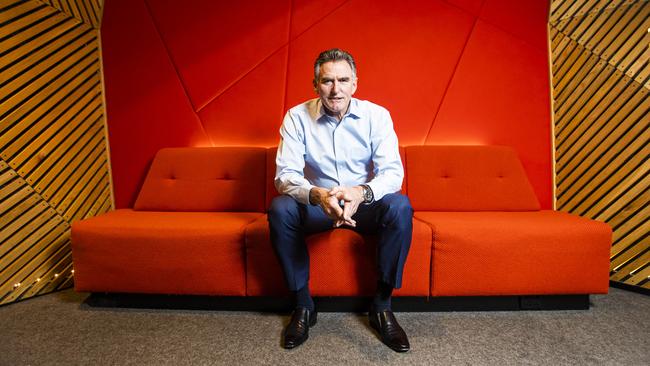
The two payments were negotiated in the run-up to the creation of the NBN in 2009, based on Telstra’s estimates of what fair compensation would look like.
These factors are somewhat overlooked in the spin from the Telstra camp to explain its less than stellar returns in recent years, blamed in part on the loss of the monopoly rent on the copper wire.
The next round of negotiations between NBN and the industry commenced on Monday with the release of NBN’s latest “offer”, which will be debated and finally approved by the ACCC.
It will hold an industry roundtable on Friday week to set the wheels in motion.
The big breakthrough on Monday was the NBN laying down suggested offers based on fixed rentals or AVC charges rather than a combination of this and floating capacity charges, known as CVCs.
Telstra responded positively, saying: “This proposal is an important step in reviewing NBN’s pricing, but it is not yet clear if it will deal with the significant challenges retailers and customers are facing.”
It added: “We are concerned if NBN Co does away with CVCs but merely makes this cost up by increasing costs to retail service providers in other areas.”
Let the battle begin.
Importantly this is just the regular arm wrestle between customers and commercial suppliers which is clouded by the fact the federal government invested $29.5bn in equity in NBN because Telstra refused to build a fibre network earlier this century.
The NBN has borrowed $25.5bn to bring the project cost to $55bn.
Inevitably the discussion will turn to the need for the government to write down the value of the NBN.
Accountants tell you to write down the value of an asset when the economic return falls below the cost of capital. Right now that doesn’t look like happening and neither will a writedown.
Telstra et al wants a writedown because after collecting $10bn in customer transfer payments and picketing $1bn a year for the next 40 years Telstra wants more value transferred to its bank from the taxpayer. It’s a little like a child wanting two Christmases.
ACCC boss Rod Sims wants to lay down new regulatory rules in the coming talks because he thinks the regulatory arrangements have lost touch with commercial reality.
That opens the door wide for Telstra et al to bang the drum about better rules controlling NBN prices and the game begins.
–
Taxing times
The BCA was quick to jump in on the landmark G7 deal on multinational tax but its leadership knows better than most that the deal is an important first step not yet completed. KPMG’s Grant Wardell-Johnson notes there are some key decisions, like how many companies should be subject to the “at least 15 per cent” tax rate.
The US would like to make it the top 100 corporations, the EU more like 2000 companies. Then there is the issue of carve-outs like banks and resources companies which may well affect Australian companies depending on where the lines are drawn.
The difference reflects who has more global powerhouses.
The concept of a globally agreed tax comes with an agreement that no one can come up with their own digital services tax or some such perk; everyone has to agree to the global tax.
Then there is the question of how you calculate the 15 per cent, which is more than the tax in some markets but less in others. So how you work out the average and what top-up mechanisms exist?
Then there is the simple issue of getting it through each country’s parliament.
In short the good news is multi-nationalism is back but this tax deal will have some twists before it is finally agreed.
-
Working together
Australia as a small trading country relies on rule-based multiculturalism more than most, and Productivity Commission chief Michael Brennan worries that fact is lost on some in the post-Covid economic debate.
There is a view in some quarters that Australian can be self-sufficient and operate by producing everything we need locally.
Anyone trying to do anything around home right now, from buying bicycle parts to floor coverings will realise it’s not so simple, which means Australia must turn to making multinationalism work.
–
NAB hopes for reprieve
Ross McEwan can be excused for a slight relaxation on Monday when Austrac said it was not considering any civil legal action against the bank, which was “reflective of the work undertaken by NAB to date”.
On the surface this suggests even though the Austrac enforcement team was taking a look, NAB may escape the $2bn in fines handed collectively to CBA and Westpac.

Austrac boss Nicole Rose seems to have turned her attention to the casino industry, as evidenced by her words in The Australian on Monday and subsequent notification to Crown, Star and Sky about regulatory scrutiny.
The potentially good news for NAB didn’t help its stock price, which was down 2.8 per cent in morning trade at $26.73 a share, in large part because the market is not yet convinced NAB will get the enforceable undertaking it is hoping for.
CBA and Westpac learned the day before action was taken against them that they were headed for court and maybe Rose figures she has already put the banks on notice to put their house in order.
The casino industry is headed for similar treatment.
But if the actions against CBA and Westpac are any guide, no one at NAB will be resting easy.
NAB certainly thinks it has done its best to fix the reporting problems at the bank and Phil Chronican and his board are well aware of the risks before them.
That, after all, is how a good regulator operates: taking tough action against known offenders to ensure the rest of the market knows it means action.
Westpac boss Peter King for one won’t be taking Austrac lightly.
Just whether McEwan can breathe easily won’t be known quite yet, but the initial reading is positive.






Over the past seven years Telstra has collected $10bn in taxpayer compensation for the transfer of its copper customers to the NBN and over the next 40 years it will collect $1bn a year in duct rentals.